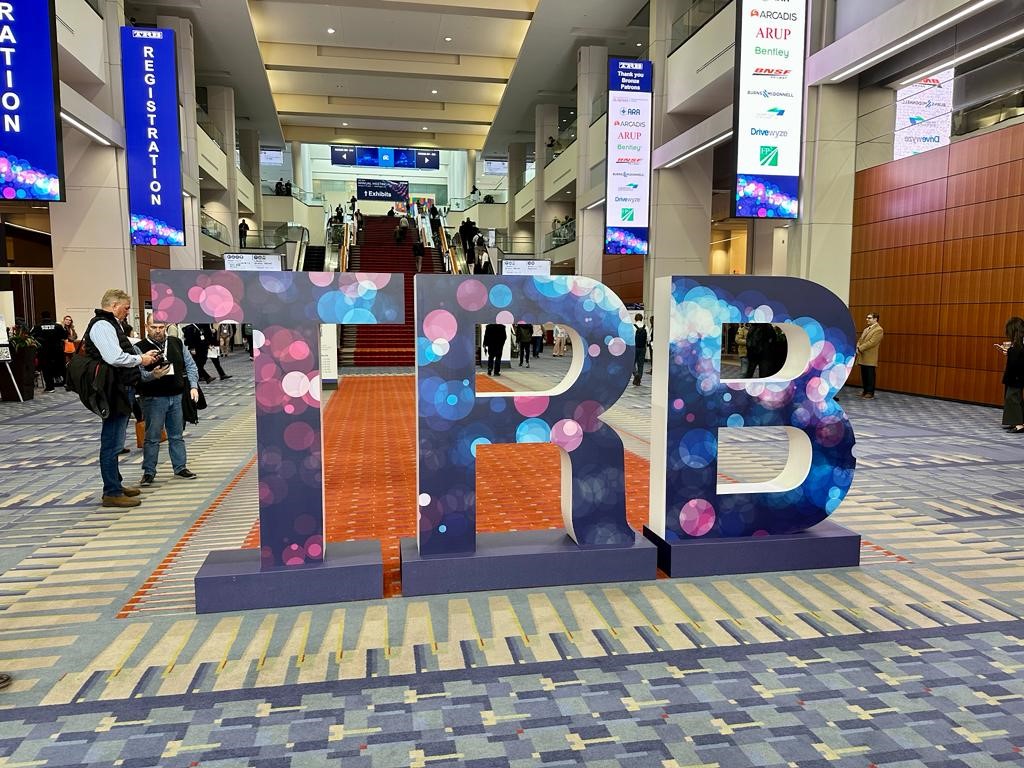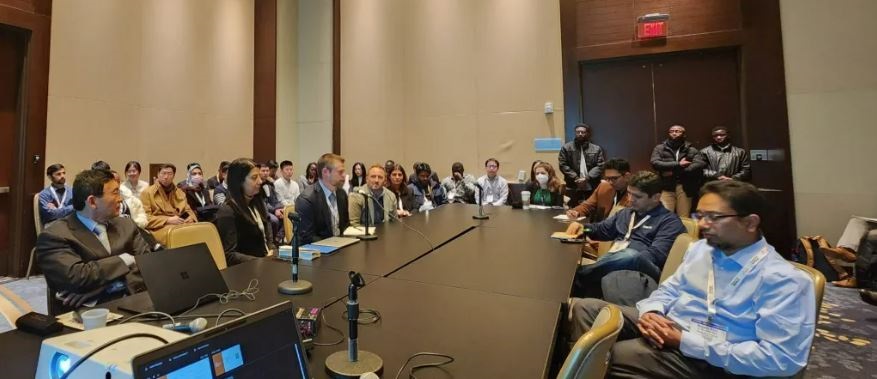
At this month’s annual meeting of the Transportation Research Board (TRB), part of the National Academies of Sciences, the University of Tennessee at Chattanooga was a sponsor of a research data challenge drawing competitors from across the country.
The Washington, DC, gathering of scientists, engineers, scholars and others in the transportation industry included recognition of the top three teams competing in the annual Transportation Forecasting Competition. The competition is organised by the TRB subcommittee on Artificial Intelligence and Advanced Computing Applications, chaired by Dr. Osama Osman, chief scientist with the UTC Center for Urban Informatics and Progress (CUIP) and a former member of the UTC College of Engineering and Computer Science faculty. Osman is now strategic growth lead and a senior transportation engineer with Leidos IT Consulting in Virginia.
“Accurately predicting human intention is a challenging task"
Along with Dr. Mina Sartipi, executive director of the UTC Research Institute and CUIP founding director, Osman was also was a member of the expert panel of judges for the competition.
The $1,000 prize for first place went to a team from China’s Southeast University for its analysis of Crossing Intentions Prediction and Risk of Conflicts Estimation for Pedestrian with Raw Lidar Data. Second place and $600 recognised the work by a University of Missouri team on Multivariate, Multitask LSTM (Long Short-Term Memory) for Pedestrian Action Forecasting and Intent Prediction. Third place and $300 were awarded to a team of collaborators from Southeast University, Yangzhou (China) University and the University of Massachusetts Lowell for their study, A Low Computational Cost Solution for Detecting and Predicting Road User Trajectories Considering User Interactions.
"Some [finalists] proved that even the hardest problems could be addressed using simple approaches"
Most important, competitors are addressing critical issues and solving hard problems within the rapidly evolving field of smart transportation, Osman said.
“The competitors showed their dedication and knowledge and proved that only team work could lead to innovative and implementable solutions to solve hard problems,” Osama said. “The three finalist teams showcased different approaches to solving the problem at hand; some even proved that even the hardest problems could be addressed using simple approaches.
“The winning team was able to benefit from all of the available data to them, which is another problem transportation engineers deal with, such as how to use the data available to them to extract useful information and metrics to characterise the system, to achieve high intention prediction accuracy and improve intersection safety.”

This year was UTC’s second as a sponsor of the competition which, Sartipi said, involved data compiled from the MLK Smart Corridor.
“We are excited to partner with TRB AED50 committee for the second time to see how AI and advance computing solutions can help make our streets safer,” she said.
"Smart intersections can learn the human behaviour and predict their intention"
“Accurately predicting human intention is a challenging task. Smart intersections can learn the human behaviour and predict their intention. That, in turn, can help vehicles to know ahead of time of the VRU intentions with high accuracy and make safer decisions in real time. Teams were able to leverage from the data provided from the MLK Smart Corridor and build such a model.”
Participants had access to an Amazon Web Services (AWS) data science environment called MLSpace.
“MLSpace is an open source licensed, web-based, data science environment for data science teams or communities of any size. MLSpace provides frictionless access to machine learning resources for individuals and teams without direct or easy access to the AWS console,” said AWS Mission Strategist Zach Buss. “Through MLSpace’s portal, users leverage the power of Amazon SageMaker, a fully managed machine learning service, without needing individual AWS Accounts. MLSpace was used by participants during the competition to collaborate on projects to build, train and deploy machine-learning models.”
“We live in a time of unprecedented advancement and access to ITS data and AI tools"
Along with the Center for Urban Informatics and Progress at UTC and Amazon Web Services, the annual Transportation Forecasting Competition was sponsored by the National Science Foundation, the City of Chattanooga and the Intelligent Transportation Society of America (ITS).
“We are proud to join UTC, NSF and Amazon Web Services to sponsor this competition and support the next-generation transportation workforce,” said ITS president and CEO Laura Chace. “We live in a time of unprecedented advancement and access to ITS data and AI tools. In order to glean insights from this data to reach our goal of saving lives on American roads, we must invest in developing new skill sets for the transportation workforce in the areas of data analytics and artificial intelligence.
“TRB’s Annual Meeting attracts the best and brightest from around the world, so there is no better place to share discoveries, present opportunities and reward inventive thinking that will help us forecast and prepare for the future, protecting all road users and creating better mobility for all.”
The TRB annual meeting attracts more than 10,000 professionals—including representatives of federal, state and local government agencies; universities; and industry—to the world’s largest forum specifically for the exchange of information among transportation researchers and practitioners.
This article was first published on the University of Tennessee at Chattanooga’s UTC News
ABOUT THE CENTER FOR URBAN INFORMATICS AND PROGRESS
CUIP is a smart city and urbanisation research center at the University of Tennessee at Chattanooga. Using the power of big data, artificial intelligence, statistical modelling, machine learning and more, CUIP is studying how cities can adapt to our generation’s challenges to ensure that our future is safer, smarter and healthier for all. CUIP applied research efforts pioneer ways to improve traffic flows, reduce vehicle and pedestrian accidents, reduce carbon emissions, optimise healthcare patient outcomes and more.











